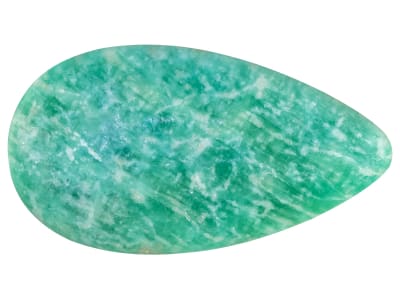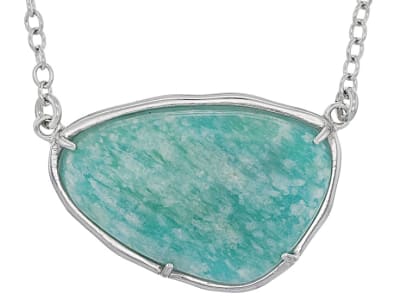Amazonite is a variety of microcline which is a member of the potassium feldspar group. Amazonite is typically light green to greenish blue or bluish green. It is used in cabochons, beads, and decorative items. It has been found at archeological sites in the middle east that date back 2000 years. Some of the best mineral specimens come from Pikes Peak in Colorado, United States of America.
General Information
Tolerance:(+0.004/-0.004)
LWUV: Inert to weak yellowish green
Amazonite Colors
-
 Blue
Blue -
 Green
Green
Alternate Names
Amazon Stone
Countries of Origin
Tanzania, United Republic Of; Macedonia (the former Yugoslav Republic of); Myanmar; Russian Federation; Viet Nam; Czechia; United States of America; Egypt; Madagascar; Libya; Portugal; Austria; Mongolia; Sweden; Mozambique; Pakistan; Korea (the Republic of); Unknown; Malawi; China; Brazil; Poland; France; Nepal; Argentina; Sri Lanka; Japan; Ukraine; Zambia; India; Spain; Canada; Mauritania; Norway; Namibia; Finland; South Africa; Australia; Peru; Ethiopia; Germany; Tajikistan
Care
Avoid hard wear, heat, chemicals and ultrasonic cleaners. Do not ingest. Not to be used as a drinking or whisky stone. Please do not ingest liquids that have held amazonite.
More About Amazonite
Ancient Egyptians considered amazonite to be a stone of courage and used it extensively in jewelry and as decorative accents. The 27th chapter of the Egyptian Book of the Dead was carved on amazonite and it's generally agreed that it is the third stone in the breastplate of Moses. Some cultures believe amazonite is named for the matriarchal societies of centuries ago. The image of a strong and powerful woman has its appeal when connected to the boy-blue-green of amazonite. People who believe in the metaphysical properties of stones consider amazonite to be a soothing stone. While we have no scientific evidence of this benefit, we agree that its easy color has a soothing appeal.


